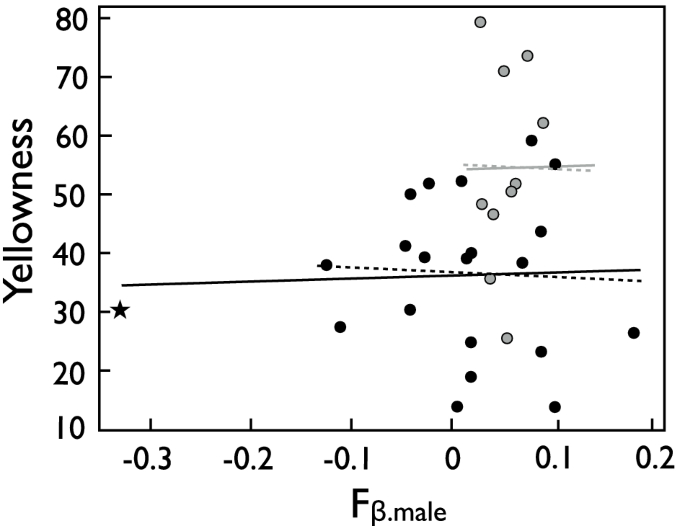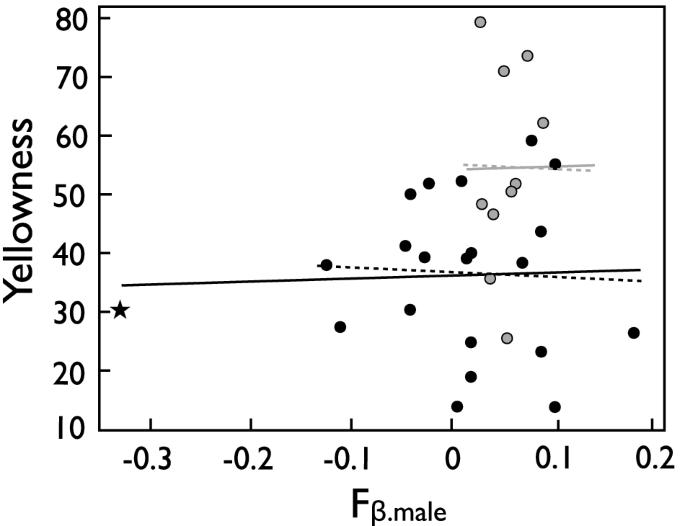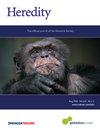Parental kinship coefficient but not paternal coloration predicts early offspring growth in lake char
IF 3.9
2区 生物学
Q2 ECOLOGY
引用次数: 0
Abstract
The ‘good genes’ hypotheses of sexual selection predict that females prefer males with strong ornaments because they are in good health and vigor and can afford the costs of the ornaments. A key assumption of this concept is that male health and vigor are useful predictors of genetic quality and hence offspring performance. We tested this prediction in wild-caught lake char (Salvelinus umbla) whose breeding coloration is known to reveal aspects of male health. We first reanalyzed results from sperm competition trials in which embryos of known parenthood had been raised singly in either a stress- or non-stress environment. Paternal coloration did not correlate with any measures of offspring performance. However, offspring growth was reduced with higher kinship coefficients between the parents. To test the robustness of these first observations, we collected a new sample of wild males and females, used their gametes in a full-factorial in vitro breeding experiment, and singly raised about 3000 embryos in either a stress- or non-stress environment (stress induced by microbes). Again, paternal coloration did not predict offspring performance, while offspring growth was reduced with higher kinship between the parents. We conclude that, in lake char, the genetic benefits of mate choice would be strongest if females could recognize and avoid genetically related males, while male breeding colors may be more relevant in intra-sexual selection.


亲缘关系系数而非父系肤色可预测湖泊红点鲑后代的早期生长。
性选择的 "好基因 "假说认为,雌性更喜欢有强壮装饰物的雄性,因为它们健康和活力良好,而且能够负担装饰物的费用。这一概念的一个关键假设是,雄性的健康和活力可以有效预测遗传质量,从而预测后代的表现。我们在野生捕获的湖白鲑(Salvelinus umbla)身上测试了这一预测,众所周知,湖白鲑的繁殖着色可以揭示雄性健康的各个方面。我们首先重新分析了精子竞争试验的结果,在这些试验中,已知亲子关系的胚胎是在应激或非应激环境中单个养育的。父体肤色与后代表现的任何指标都不相关。然而,亲代之间的亲缘关系系数越高,后代的生长速度越慢。为了检验这些初步观察结果的稳健性,我们收集了新的野生雄性和雌性样本,将它们的配子用于全因子体外繁殖实验,并在应激或非应激环境(微生物诱导的应激)中单独培育了约 3000 个胚胎。同样,父亲的肤色并不能预测后代的表现,而亲缘关系越近,后代的生长速度越慢。我们的结论是,在湖泊焦炭中,如果雌性能识别并避开有遗传亲缘关系的雄性,择偶的遗传益处就会最大,而雄性的繁殖颜色可能与性内选择更相关。
本文章由计算机程序翻译,如有差异,请以英文原文为准。
求助全文
约1分钟内获得全文
求助全文
来源期刊

Heredity
生物-进化生物学
CiteScore
7.50
自引率
2.60%
发文量
84
审稿时长
4-8 weeks
期刊介绍:
Heredity is the official journal of the Genetics Society. It covers a broad range of topics within the field of genetics and therefore papers must address conceptual or applied issues of interest to the journal''s wide readership
 求助内容:
求助内容: 应助结果提醒方式:
应助结果提醒方式:


